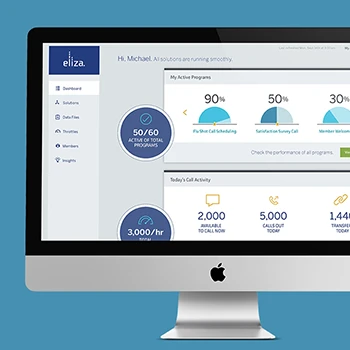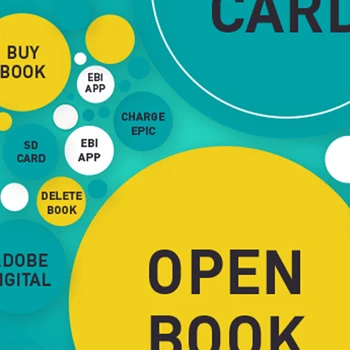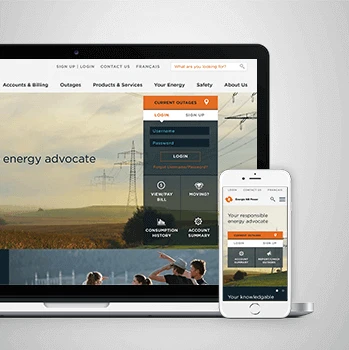What makes experienced UX researchers different from junior researchers?
Experienced researchers bring deep behavioral psychology understanding and systematic methodological expertise. They can handle complex usability testing sessions, create strategic research approaches, and translate findings into actionable business insights. Their background in human behavior sciences enables them to uncover root causes of user frustrations rather than just surface symptoms.
Tip: Evaluate candidates based on their ability to connect research findings to business strategy rather than just their technical method execution skills.
How do you determine which research methods are right for our specific challenge?
Method selection depends on your research objectives, timeline, resources, and current development stage. Discovery methods like user interviews and ethnographic observation work best early in development, while evaluative methods like usability testing and A/B testing are ideal for validating designs. We assess your needs and recommend the optimal approach through Experience Thinking framework.
Tip: Share your specific business questions and constraints upfront so researchers can recommend methods that fit your context rather than default approaches.
What's the difference between qualitative and quantitative UX research?
Qualitative methods provide deep insights into user motivations and behaviors, answering 'why' questions through interviews, observations, and usability testing. Quantitative methods reveal patterns and frequency, answering 'what' and 'how often' through analytics, surveys, and A/B testing. The most effective research combines both approaches for comprehensive understanding.
Tip: Plan for mixed-method approaches that combine both qualitative insights and quantitative validation rather than choosing one approach exclusively.
How do you ensure research findings connect to our Experience Thinking strategy?
We align research objectives with brand, content, product, and service experience areas from the Experience Thinking framework. This ensures findings inform holistic experience design rather than isolated improvements. Our researchers understand how user insights impact each quadrant of the experience ecosystem and provide integrated recommendations.
Tip: Brief researchers on your broader experience strategy and business objectives so their findings can inform strategic decisions beyond immediate usability fixes.
What types of research work best for different stages of product development?
Early stages benefit from discovery methods like user interviews, contextual inquiry, and journey mapping to understand needs and opportunities. Design phases use formative research like concept testing and prototype evaluation. Later stages employ summative research like usability testing and post-launch analytics to validate and optimize performance.
Tip: Match research methods to your development stage and decision-making needs rather than using the same approach throughout your product lifecycle.
How do you handle research for complex enterprise or B2B products?
B2B research requires understanding organizational hierarchies, workflow complexities, and multi-user scenarios. We design research that captures different user roles, decision-making processes, and organizational constraints. Methods include stakeholder mapping, workflow analysis, and contextual inquiry to understand real-world usage patterns in professional environments.
Tip: Include multiple user types and organizational stakeholders in B2B research rather than focusing only on primary end users.
What credentials and background should we expect from UX researchers?
Strong UX researchers typically have backgrounds in psychology, anthropology, sociology, human-computer interaction, or related behavioral sciences. They should demonstrate expertise in research design, statistical analysis, user interviewing, and translating insights into actionable recommendations. Business affinity and strategic thinking capabilities are equally important as technical skills.
Tip: Look for researchers who combine formal research training with practical business experience rather than purely academic or purely tactical backgrounds.
How do you develop an effective research approach for our project?
Effective research planning starts with understanding your business objectives, user questions, and success metrics. We create research strategies that balance discovery needs with practical constraints like timeline and budget. The approach includes method selection, participant requirements, analysis frameworks, and deliverable formats aligned with your decision-making process.
Tip: Clearly define what decisions the research needs to inform rather than just asking for general user insights to ensure focused and actionable outcomes.
What's your process for recruiting the right research participants?
Participant recruitment involves defining precise user segments, creating screening criteria, and using appropriate recruitment channels. We develop detailed participant profiles based on behavioral characteristics, not just demographics. Recruitment strategies vary by method and include professional recruiting services, internal customer databases, and targeted social media outreach.
Tip: Focus participant criteria on relevant behaviors and use cases rather than just demographic characteristics to ensure meaningful research insights.
How do you plan research timelines that fit our development cycles?
Research planning integrates with your product development timeline and decision points. We structure research phases to provide insights when needed for design decisions. This includes rapid research methods for urgent questions and longitudinal studies for deeper understanding. Planning accommodates both scheduled deliverables and ad-hoc research needs.
Tip: Build research into your development timeline from the beginning rather than adding it as an afterthought to ensure insights can actually influence design decisions.
What's your approach to setting research objectives and success metrics?
Research objectives connect directly to business goals and specific questions that need answers. We establish clear success criteria, define what good enough looks like, and identify key decisions the research will inform. Objectives include both learning goals and business impact measures to ensure research creates value beyond just insights.
Tip: Frame research objectives around specific decisions you need to make rather than general learning goals to ensure actionable outcomes.
How do you balance research rigor with speed and budget constraints?
Research planning involves tradeoffs between depth, speed, and cost. We recommend approaches that provide sufficient confidence for decision-making within your constraints. This might mean smaller sample sizes with higher-quality participants, rapid research methods, or phased approaches that build understanding incrementally while providing early insights.
Tip: Prioritize research questions by their impact on critical decisions rather than trying to answer everything equally to maximize value within constraints.
What factors determine research sample sizes and participant numbers?
Sample size depends on research method, complexity of findings, and confidence requirements. Qualitative research typically needs 5-12 participants per user segment for pattern identification, while quantitative research requires larger samples for statistical significance. We balance statistical requirements with practical constraints and diminishing returns of additional participants.
Tip: Focus on participant quality and representation rather than just quantity to ensure meaningful insights from your research investment.
How do you plan for different types of research deliverables?
Deliverable planning considers your team's workflow, decision-making process, and communication preferences. Options include executive summaries, detailed reports, presentations, personas, journey maps, and design recommendations. We format findings to match how your organization consumes information and makes decisions based on research insights.
Tip: Specify your preferred deliverable formats and decision-making process upfront so research outputs integrate smoothly with your workflow.
What's your approach to conducting user interviews and contextual research?
User interviews follow structured protocols while allowing natural conversation flow. We use behavioral interviewing techniques, observational methods, and contextual inquiry to understand real-world usage patterns. Sessions capture both attitudinal data (what users say) and behavioral data (what users do) to provide complete understanding of user experiences.
Tip: Participate in key research sessions as an observer to gain firsthand understanding of user perspectives rather than relying solely on research reports.
How do you conduct effective usability testing sessions?
Usability testing involves task-based evaluation with representative users using think-aloud protocols. We test at various fidelity levels from paper prototypes to live products, measuring effectiveness, efficiency, and satisfaction. Sessions capture both successful task completion and points of confusion or frustration to identify improvement opportunities.
Tip: Test early and iteratively with lower-fidelity prototypes rather than waiting for finished designs to enable cost-effective improvements.
What's your methodology for remote versus in-person research?
Research method selection considers participant location, task complexity, and observation requirements. Remote research enables broader participant reach and natural environment observation, while in-person research provides richer behavioral observation and better rapport building. We use appropriate technology and protocols for each approach to maintain research quality.
Tip: Choose research format based on what you need to observe and learn rather than convenience or cost considerations alone.
How do you ensure research sessions produce actionable insights?
Session design focuses on specific research questions with structured observation and analysis protocols. We capture behavioral patterns, emotional responses, and verbatim feedback that connects to design decisions. Real-time synthesis during sessions enables immediate pattern recognition and follow-up question development for deeper understanding.
Tip: Define specific research questions and success criteria before sessions rather than conducting general exploration to ensure focused, actionable insights.
What's your approach to testing with different user types and personas?
Multi-persona research involves understanding different user motivations, capabilities, and contexts. We recruit participants representing key user segments and design scenarios that reveal segment-specific needs and behaviors. Testing approaches account for varying experience levels, domain knowledge, and usage patterns across different user types.
Tip: Test with your most challenging user segments first to identify fundamental usability issues that affect all users rather than starting with power users.
How do you handle research bias and ensure objective findings?
Bias mitigation includes diverse participant recruitment, neutral questioning techniques, multiple researcher perspectives, and systematic analysis methods. We design research protocols that minimize leading questions and confirmation bias while capturing authentic user behaviors and opinions. Analysis includes cross-validation and triangulation from multiple data sources.
Tip: Include team members with different perspectives in research synthesis rather than relying on single researcher interpretation to reduce bias.
What's your quality assurance process for research execution?
Quality assurance includes session preparation, protocol validation, data collection standards, and analysis verification. We use standardized methods while adapting to participant needs and research contexts. Quality checks include session recordings, data verification, and peer review of findings to ensure reliable and valid insights.
Tip: Review research protocols and preliminary findings during the study rather than waiting for final results to ensure quality and relevance.
How do you analyze and synthesize research findings into actionable insights?
Analysis involves systematic pattern identification, behavioral coding, and insight synthesis across multiple data sources. We use thematic analysis, affinity mapping, and statistical methods appropriate to the data type. Synthesis connects findings to business objectives and design implications through frameworks like Experience Thinking that show impact across brand, content, product, and service areas.
Tip: Participate in analysis workshops to understand the reasoning behind insights rather than just receiving final conclusions.
What's your process for turning research data into design recommendations?
Recommendations emerge from connecting user needs with business objectives and technical constraints. We prioritize findings by impact and feasibility, then develop specific, actionable recommendations with implementation guidance. Recommendations address root causes identified through research rather than just surface symptoms or feature requests.
Tip: Ask for recommendations that include implementation difficulty and resource requirements to help with prioritization and planning.
How do you validate research findings and ensure reliability?
Validation includes triangulation across multiple methods, participant verification, and cross-researcher analysis. We look for consistent patterns across different data sources and use appropriate statistical methods for quantitative data. Findings are validated through follow-up research or testing when sample sizes or confidence levels require additional verification.
Tip: Ask for confidence levels and validation approaches for key findings rather than treating all research insights as equally reliable.
What's your approach to identifying and prioritizing user pain points?
Pain point identification combines frequency analysis, severity assessment, and business impact evaluation. We categorize issues by user type, task context, and resolution difficulty. Prioritization considers both user impact and business value, helping focus improvement efforts on changes that provide maximum benefit for users and organization.
Tip: Focus on pain points that affect your most important user journeys and business outcomes rather than trying to fix every identified issue.
How do you create personas and user profiles from research data?
Personas develop from behavioral segmentation and motivational analysis rather than demographic clustering. We identify distinct user patterns, goals, and contexts to create research-based archetypes that guide design decisions. Personas include behavioral characteristics, usage scenarios, and pain points that inform Experience Thinking across all four quadrants.
Tip: Ensure personas include specific behavioral patterns and goals rather than just demographic information to make them useful for design decisions.
What's your methodology for journey mapping from research insights?
Journey mapping synthesizes research findings into end-to-end experience visualization showing user actions, emotions, and pain points across touchpoints. Maps integrate findings from multiple research methods to show complete user experience including off-platform behaviors and contextual factors that influence product usage and satisfaction.
Tip: Use journey maps to identify experience gaps and opportunities across your entire customer lifecycle rather than just within your direct product interactions.
How do you measure the business impact of research-driven improvements?
Impact measurement includes both user experience metrics and business outcome tracking. We establish baseline measurements before changes and monitor improvement in task completion, satisfaction scores, conversion rates, and other relevant KPIs. Measurement approaches connect user experience improvements to business value through quantifiable metrics.
Tip: Establish measurement frameworks and baseline metrics before implementing research recommendations to demonstrate ROI and guide future research investment.
How do you present research findings to different stakeholders?
Stakeholder communication adapts format and content to audience needs and decision-making roles. Executives receive strategic summaries with business implications, while design professionals get detailed findings with implementation guidance. Presentations include data visualization, user quotes, and clear recommendations tailored to each audience's information needs and attention spans.
Tip: Specify your stakeholder communication needs and preferences early so research presentations match your organization's decision-making process.
What deliverables and documentation do you provide?
Deliverables include research reports, executive summaries, presentation decks, personas, journey maps, and implementation guides. Documentation provides methodology details, raw data access, and analysis rationale for transparency and future reference. Formats accommodate different organizational needs from detailed analysis to high-level strategic guidance.
Tip: Request both summary presentations for stakeholder communication and detailed documentation for team reference to maximize research value.
How do you ensure research insights actually influence design decisions?
Research integration requires connecting findings to specific design decisions and ongoing project involvement. We provide implementation guidance, participate in design reviews, and offer continued consultation during solution development. This ensures research insights inform actual design choices rather than just providing interesting but unused documentation.
Tip: Include researchers in design review sessions and implementation planning rather than treating research as a separate phase that ends when reports are delivered.
What's your approach to communicating complex or sensitive research findings?
Complex findings require careful framing and context to ensure accurate interpretation and appropriate response. We use clear visualization, specific examples, and actionable recommendations to communicate difficult insights. Sensitive findings about user frustrations or product limitations are presented constructively with solution focus rather than just problem identification.
Tip: Prepare stakeholders for potentially challenging findings and frame them as improvement opportunities rather than failures to maintain productive discussions.
How do you maintain ongoing communication throughout research projects?
Project communication includes regular progress updates, preliminary findings sharing, and milestone check-ins. We provide transparency into research progress, emerging insights, and any necessary adjustments to approach or timeline. Communication maintains stakeholder engagement and enables course correction when needed.
Tip: Establish regular communication schedules and feedback opportunities rather than waiting for final results to maintain project alignment and momentum.
What's your process for handling conflicting or unexpected research results?
Unexpected findings require careful analysis and additional validation to understand implications. We investigate conflicting results through supplementary research, alternative analysis methods, or expanded participant recruitment. Communication focuses on understanding what results mean for strategy and next steps rather than dismissing unexpected findings.
Tip: View unexpected research results as learning opportunities rather than research failures, and invest in understanding their implications for your strategy.
How do you help teams build internal research capabilities?
Capability building includes knowledge transfer, methodology training, and collaborative research execution. We share research techniques, analysis methods, and best practices while working on actual projects. This approach builds internal expertise while delivering immediate research value rather than treating training as separate from project work.
Tip: Plan for knowledge transfer and skill development from the beginning of research engagements rather than treating it as an add-on service.
How do you integrate UX research with existing product development processes?
Research integration requires understanding your development methodology, decision points, and team workflows. We adapt research timing and deliverables to match agile sprints, design phases, or waterfall stages. Integration ensures research insights are available when needed for product decisions rather than delivered at inconvenient times.
Tip: Map research activities to your actual decision-making timeline rather than standard research project phases to ensure maximum impact.
What's your approach to working with internal design and product professionals?
Collaboration involves embedded research support, joint planning sessions, and shared responsibility for research outcomes. We work alongside internal professionals rather than separately, providing specialized expertise while building team capabilities. Collaboration includes co-facilitation, shared analysis, and integrated recommendation development.
Tip: Structure research engagements as partnership rather than outsourcing to build internal capabilities while accessing specialized expertise.
How do you coordinate research across different Experience Thinking areas?
Cross-quadrant research coordination ensures insights inform brand, content, product, and service experience improvements simultaneously. We design research that captures insights relevant to multiple experience areas and provide recommendations that show connections between different touchpoints and user needs across the complete experience ecosystem.
Tip: Plan research that captures insights across your entire experience ecosystem rather than focusing on individual touchpoints or departments.
What's your methodology for longitudinal research and ongoing user understanding?
Longitudinal research tracks user behavior and satisfaction changes over time through repeated studies, diary methods, and relationship-building with participant panels. This approach reveals usage pattern evolution, feature adoption rates, and long-term experience quality rather than just point-in-time snapshots of user behavior.
Tip: Invest in longitudinal research approaches that track experience quality over time rather than relying solely on one-time studies for strategic understanding.
How do you scale research insights across large organizations?
Scaling involves creating research repositories, standardized methods, and insight sharing systems that enable organization-wide learning from user research. We develop frameworks for consistent research application and establish processes for sharing insights across different product areas, geographical regions, or business units.
Tip: Create systematic approaches for capturing and sharing research insights across your organization rather than keeping findings isolated to individual project teams.
What's your approach to competitive research and market intelligence?
Competitive research combines user experience analysis, feature comparison, and market positioning assessment. We evaluate competitor experiences from user perspective rather than just feature comparison, identifying opportunities for differentiation through superior user experience. Analysis includes both direct competitors and alternative solutions users might consider.
Tip: Include competitive research as ongoing intelligence gathering rather than one-time analysis to understand evolving market opportunities and threats.
How do you adapt research methods for emerging technologies and changing user expectations?
Research adaptation involves methodology evolution, new data collection techniques, and updated analysis frameworks that account for changing user behaviors and technological capabilities. We monitor research method effectiveness and adapt approaches as user expectations and interaction patterns evolve with new technologies and social changes.
Tip: Plan for research method evolution and adaptation rather than expecting static approaches to remain effective as technology and user expectations change.
How is AI transforming UX research methods and analysis?
AI enhances research through automated transcription, pattern recognition in large datasets, sentiment analysis, and preliminary insight generation. AI tools accelerate analysis while human researchers focus on interpretation, strategic thinking, and nuanced understanding. We use AI to augment human capabilities rather than replace researcher judgment in complex experience questions.
Tip: Use AI tools to accelerate research analysis and data processing while maintaining human oversight for strategic interpretation and insight development.
What's your approach to remote research tools and digital methodologies?
Remote research leverages screen sharing, video conferencing, online survey platforms, and specialized usability testing tools to conduct research across geographical boundaries. Digital methodologies include mobile research apps, automated user behavior tracking, and virtual reality testing environments that provide new insights into user behavior.
Tip: Choose remote research tools based on research objectives and participant needs rather than just convenience or cost considerations.
How do you integrate research with analytics and existing data sources?
Data integration combines behavioral analytics, customer support data, sales information, and survey results with qualitative research findings. This mixed-method approach provides comprehensive understanding by combining what users do (analytics) with why they do it (research) to create actionable insights about user experience.
Tip: Share existing data sources and analytics access with researchers early to enable integrated analysis rather than treating research as separate from existing data.
What's your methodology for testing voice interfaces and emerging interaction methods?
Emerging interface research adapts traditional usability methods for new interaction paradigms including voice, gesture, AR/VR, and AI-powered interfaces. Testing considers context of use, learning curves, and multi-modal interactions that combine traditional and emerging interface elements in realistic usage scenarios.
Tip: Test emerging interfaces in realistic contexts and usage scenarios rather than isolated laboratory conditions to understand practical adoption challenges.
How do you conduct research for mobile and cross-platform experiences?
Cross-platform research examines user behavior across devices and channels, understanding how context influences interaction patterns and user expectations. Research methods account for different screen sizes, input methods, usage contexts, and attention patterns that vary across platforms while maintaining experience consistency.
Tip: Research cross-platform experiences as integrated user journeys rather than testing individual platforms separately to understand real-world usage patterns.
What's your approach to privacy and data protection in user research?
Privacy protection includes informed consent, data anonymization, secure storage, and transparent data usage policies. We comply with privacy regulations while maintaining research effectiveness through careful participant communication, data minimization, and secure research infrastructure that protects participant information throughout the research process.
Tip: Establish clear privacy policies and data handling procedures before beginning research rather than addressing privacy concerns after data collection.
How do you use research repositories and knowledge management systems?
Research repositories organize findings, methodologies, and insights for organization-wide access and learning. Systems include searchable databases, tagged content, research artifact storage, and insight sharing platforms that enable research knowledge to accumulate and inform future projects rather than remaining isolated to individual studies.
Tip: Invest in research knowledge management systems that capture and organize insights for long-term organizational learning rather than treating each research project as isolated effort.












